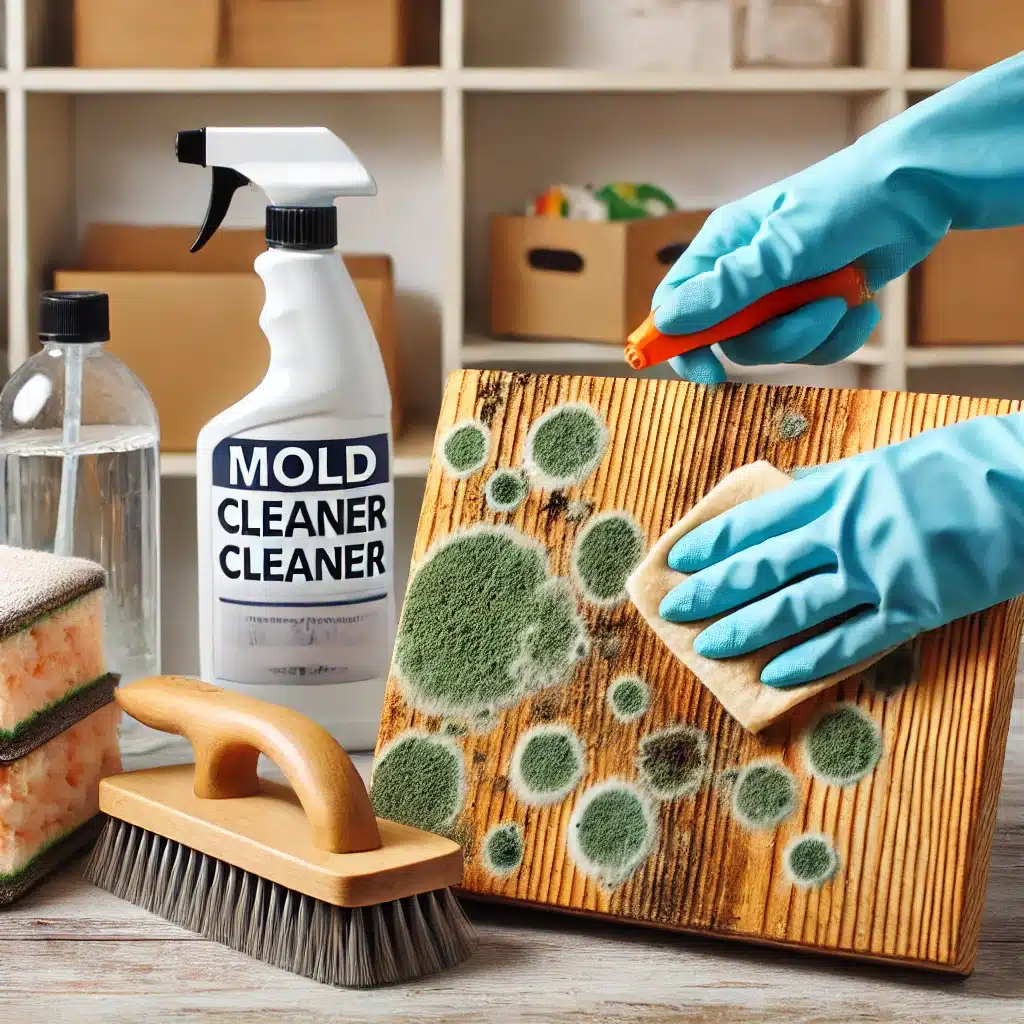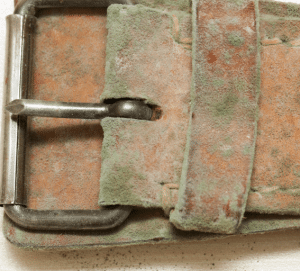Mold growth on wood surfaces is a common problem that can seriously affect both the durability of the wood and the health of those around it. Wood is an organic material, which makes it a perfect breeding ground for mold spores, especially in moist and humid conditions. To keep your wooden surfaces in good condition and ensure a healthy environment, it’s important to tackle mold promptly and efficiently.
One effective method to eliminate mold on wood surfaces is to perform regular mold testing. This helps identify any hidden mold and assess the severity of the issue. Once identified, using a mixture of water and vinegar or a specialized mold cleaner can help remove the mold. It’s also crucial to address the underlying moisture problem by fixing leaks and controlling humidity levels. By taking these steps, you can preserve the beauty and structural integrity of your wood surfaces while promoting a safer living or working space.
The Dangers of Mold on Wood
Mold is more than just an eyesore; it can lead to serious problems if ignored. Prolonged exposure to mold can cause a range of health issues, from respiratory problems and allergic reactions to more severe conditions for those with weakened immune systems.
Additionally, mold testing is essential because mold can damage wood by weakening its fibers, which may compromise the stability of your wooden surfaces. Addressing mold promptly is crucial for maintaining both your health and the structural integrity of your home.
Signs of Mold on Wood Surfaces
Recognizing the telltale signs of mold growth on wood is crucial for taking prompt action. Common indicators include visible discoloration, musty odors, and the presence of fuzzy or slimy growths. Mold can appear in various colors, such as black, green, white, or pink, depending on the species. If you notice any of these signs, it’s essential to address the issue immediately to prevent further spread.
Regular mold testing can help identify hidden mold and ensure that you take the necessary steps to keep your home safe and healthy. Prompt intervention can save you from more significant problems down the line, both in terms of health and structural damage to your wooden surfaces.
Precautions to Take Before Removing Mold from Wood
Before attempting to remove mold from wood surfaces, it’s essential to take proper precautions to protect yourself and others nearby. Wear protective gear, including gloves, goggles, and a respirator or face mask, to avoid inhaling mold spores or exposing your skin to potential irritants.
Additionally, ensure proper ventilation by opening windows or using fans to circulate air during the removal process. This helps to disperse any mold spores that might become airborne and reduces the risk of health issues. Regular mold testing can also help identify the extent of mold growth, allowing you to take appropriate action to keep your environment safe and healthy.
Natural Methods to Kill Mold on Wood
Vinegar Solution
Vinegar is a natural and effective mold killer. Mix equal parts of white vinegar and water in a spray bottle, and generously apply the solution to the affected areas. Allow it to sit for an hour or more before scrubbing and rinsing.
Baking Soda Paste
Create a paste by mixing baking soda and water, and apply it to the moldy surfaces. Let it sit for several hours or overnight, then scrub and rinse thoroughly. The abrasive nature of baking soda helps remove stubborn mold stains.
Tea Tree Oil
Known for its antifungal properties, tea tree oil can be an effective mold killer. Combine a few drops of tea tree oil with water in a spray bottle, then spray it on the affected areas. Allow it to sit for several hours before wiping it clean.
Hydrogen Peroxide
Hydrogen peroxide is a natural disinfectant that can kill mold on wood surfaces. Mix equal parts of hydrogen peroxide and water, and apply the solution to the moldy areas. Allow it to rest for at least an hour before scrubbing and rinsing.
Chemical Solutions to Eliminate Mold on Wood
While natural methods are often preferred, in some cases, chemical solutions may be necessary to effectively eliminate stubborn mold growth on wood surfaces. Here are some common chemical options:
Bleach Solution
Dilute bleach with water (1 part bleach to 3 parts water) and apply it to the affected areas. Allow it to sit for several minutes before scrubbing and rinsing thoroughly. Exercise caution when using bleach, as it can cause damage to certain surfaces and fabrics.
Concrobium Mold Control
This EPA-registered product is designed specifically for mold remediation. Adhere to the manufacturer’s guidelines for correct application and safety measures.
Mold Removal Sprays
Various commercial mold removal sprays are available on the market. These products often contain active ingredients like quaternary ammonium compounds or sodium hypochlorite, which can effectively kill mold on wood surfaces. Always read and follow the product instructions carefully.
Sanding and Refinishing Wood Surfaces Affected by Mold
In cases where mold has penetrated deep into the wood fibers, sanding and refinishing may be necessary to restore the surface. First, remove all visible mold growth using a suitable cleaning solution. Then, use fine-grit sandpaper to sand the affected area until all discoloration and mold residue are gone, ensuring the wood is smooth.
After sanding, apply a wood sealer or stain to protect the wood from future moisture infiltration. Once dry, apply a protective finish, such as varnish or polyurethane, to add an extra layer of protection against moisture and maintain the wood’s appearance and durability. These steps will help eliminate deep-seated mold and prevent its return, keeping your wood surfaces in good condition. Regular mold testing can help you maintain a mold-free environment.
Preventing Future Mold Growth on Wood
To prevent future mold growth on wood surfaces, it’s essential to address the underlying moisture issues that allowed the mold to thrive in the first place. Consider the following preventive measures:
Improve Ventilation
Ensure proper air circulation by using fans, opening windows, or installing a dehumidifier to reduce moisture levels. Good airflow helps prevent mold growth by keeping surfaces dry. Proper ventilation is especially important in areas prone to high humidity, such as bathrooms, kitchens, and basements. By improving ventilation, you can significantly reduce the chances of mold developing on wood surfaces.
Fix Leaks
Promptly repair any leaks or water damage to eliminate potential sources of moisture. Addressing leaks quickly prevents mold from finding a place to grow. Check your plumbing, roof, and windows regularly for any signs of leaks and fix them immediately. This proactive approach helps to keep your wooden surfaces dry and mold-free.
Control Humidity
Maintain indoor humidity levels between 30% and 50% using dehumidifiers or air conditioning units. Keeping humidity in check is essential for preventing mold growth. Utilize a hygrometer to keep track of the humidity levels in your home. In areas like basements, where humidity tends to be higher, a dehumidifier can be particularly effective in maintaining the ideal humidity level and preventing mold.
Apply Wood Sealants
Seal and waterproof wood surfaces, especially in moisture-prone areas like bathrooms and basements. This creates a barrier that helps protect wood from mold. Choose high-quality wood sealants that are designed to withstand moisture and apply them according to the manufacturer’s instructions. Regularly reapply the sealant as needed to ensure continuous protection against mold.
Regularly Clean and Inspect
Routinely clean and inspect wood surfaces for signs of mold growth, addressing any issues promptly. Use appropriate cleaning agents and techniques to keep your wood surfaces clean and free of mold. Regular mold testing can help catch and deal with mold early, ensuring your wood stays in good condition. By maintaining a regular cleaning and inspection schedule, you can prevent mold from taking hold and spreading on your wood surfaces.
Hiring Professionals for Mold Removal on Wood Surfaces
In cases of severe or widespread mold growth, hiring professional mold remediation services is advisable. Professionals have the expertise, equipment, and safety protocols to effectively address mold issues, especially in larger or complex situations. They ensure thorough mold removal without posing risks to your health or property.
Additionally, professional services can identify and address the underlying causes of mold growth, such as leaks or high humidity. By tackling these root causes, they provide a comprehensive and long-lasting solution. Regular mold testing can also be part of their service, helping you maintain a mold-free home. Many companies, including ours, offer free mold inspections to assess the extent of the problem and recommend the best course of action.
FAQs About Mold on Wood
Is mold on wood surfaces dangerous?
Yes, mold growth on wood surfaces can pose health risks, particularly for individuals with respiratory issues or weakened immune systems. Prolonged exposure to mold can lead to allergic reactions, respiratory problems, and other health concerns.
Can I paint over mold on wood?
Painting over mold is not recommended, as it will not eliminate the root cause of the problem. The mold will likely continue to grow and eventually reappear, potentially causing further damage to the wood surface.
How do I know if the mold has been completely removed?
After removing visible mold growth, it’s essential to inspect the area thoroughly for any remaining discoloration or musty odors. If these signs persist, further cleaning or professional assistance may be necessary to ensure complete mold removal.
Can mold on wood surfaces be prevented?
While it’s difficult to completely eliminate the risk of mold growth on wood surfaces, several preventive measures can be taken, such as controlling humidity levels, addressing moisture issues promptly, and applying wood sealants or finishes.
How long does it take for mold to grow on wood?
Mold can begin to grow on wood surfaces within 24-48 hours if the conditions are favorable, such as high moisture levels and warm temperatures. Prompt action is crucial to prevent the spread of mold and minimize potential damage.
Conclusion
Mold growth on wood surfaces is a common problem that can significantly affect both the durability of the wood and the health of those around it. As an organic material, wood provides an ideal environment for mold spores, especially in moist and humid conditions. To keep your wooden surfaces in top condition and ensure a healthy environment, addressing mold promptly and efficiently is crucial.
At Mold Testing Houston, we understand the challenges of dealing with mold on wood surfaces. One of the most effective methods to eliminate mold is through regular mold testing, which helps identify hidden mold and assess the severity of the issue. Once identified, solutions such as a mixture of water and vinegar or a specialized mold cleaner can effectively remove mold. It’s also essential to fix any leaks and control humidity levels to prevent future mold growth.
We are committed to helping you maintain the beauty and structural integrity of your wood surfaces while promoting a safer living or working space. Our comprehensive services include a free mold inspection to ensure that you are fully informed about any potential mold issues. By taking these proactive steps, you can protect your property and the health of those who live or work there.
Don’t let mold compromise the safety and aesthetics of your home or business. Contact Mold Testing Houston today for a free mold inspection and let our experts guide you in eliminating mold and preventing its return. With our professional support, you can enjoy peace of mind knowing your environment is clean, healthy, and mold-free.
End Note
At Mold Testing Houston, we are dedicated to providing top-notch mold inspection and remediation services to ensure your home or business remains safe and healthy.
For more detailed information about our services, please visit our services page. If you’re in the Post Oak area of Houston, Texas, check out our specialized mold testing services. Learn more about our team and our commitment to quality on our about page.
Stay informed and updated with our latest insights by visiting our blog. For any questions or to schedule a service, feel free to contact us through our contact page. You can also connect with us on Facebook to stay engaged with our community.
Don’t wait until mold becomes a bigger problem. Contact Mold Testing Houston today for a free mold inspection and let us help you keep your environment clean and healthy. Our expert team is ready to provide you with the best service and peace of mind.





